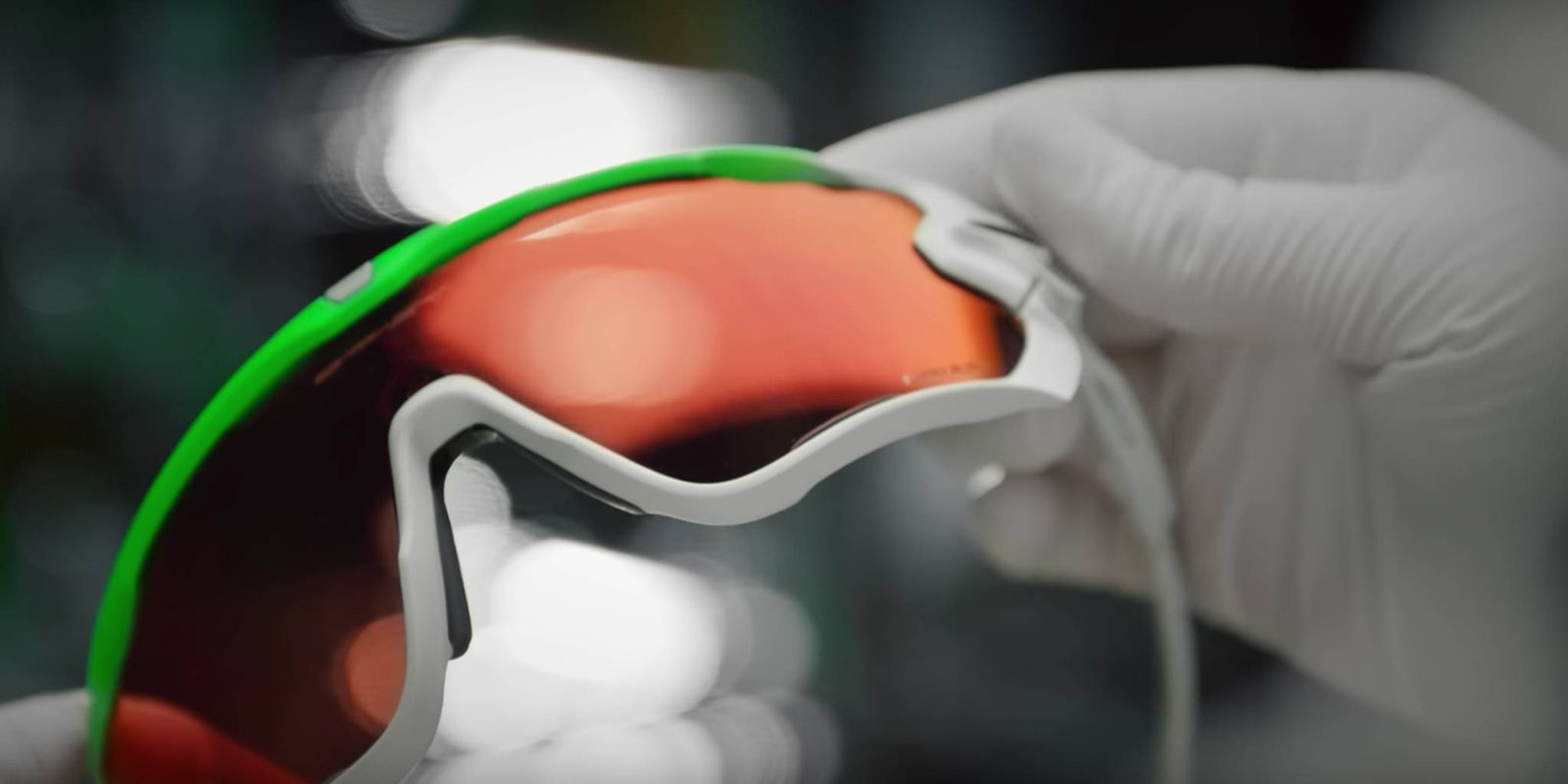While best and the brighest athletes from around the world are in the spotlight at the Olympics to get their shine on, they’ve found shade in the form of special glasses made by Oakley.
The Green Fade glasses utilize Oaklely’s Prizm lens technology, which fine-tunes the individual wavelengths of color to sharpen vision and reveals subtle detail that would otherwise be unseen. It’s handy for the average person, but especially useful for an athlete who has to pay close attention to their surroundings.
The lenses essentially create an artificial color spectrum—a version of the world where everything is just a little clearer—that is designed to improve performance. For example, beach volleyball players may be able to better spot the white of the ball against the light blue sky so they can ensure they are in position for the next hit.
The effect is acheived by modifying the wavelengths as they pass through the lenses. Specific dyes are used in the polycarbonate lenses to create tints that make it possible to change the transparency and opacity of each wavelength.
While the concept behind the glasses make sense, and a similar version of the lens used in ski and snowboard goggles created a frenzy at that 2014 Winter Olympics, there’s not a ton of scientific evidence to suggest typical tinted shades create an improvement in performance.
One study conducted by the Pacific University College of Optometry found some lenses to offer improvements in vision and that athletes prefer the tinted shades to clear lenses. But other studies, including one from researchers at the University of Ballarat’s Human Movement and Sports Science, found no actual improvement in performance in athletes wearing tinted glasses.
Of course, none of the lenses tested in the studies were the super specialized Green Fade glasses. It’s possible Oakley’s attention to detail in the glasses produce better results. And there’s something to be said for the placebo effect of making athletes feel more comfortable with the glasses on.
The shades aren’t just for Olympians, either; while the specialized version of the lenses can cost over $1,000, you can get your hands on glasses utilizing Prizm technology if you have $200 to spend. Just don’t expect to get Olympic-level performance during whatever task you wear them for.
H/T PSFK


